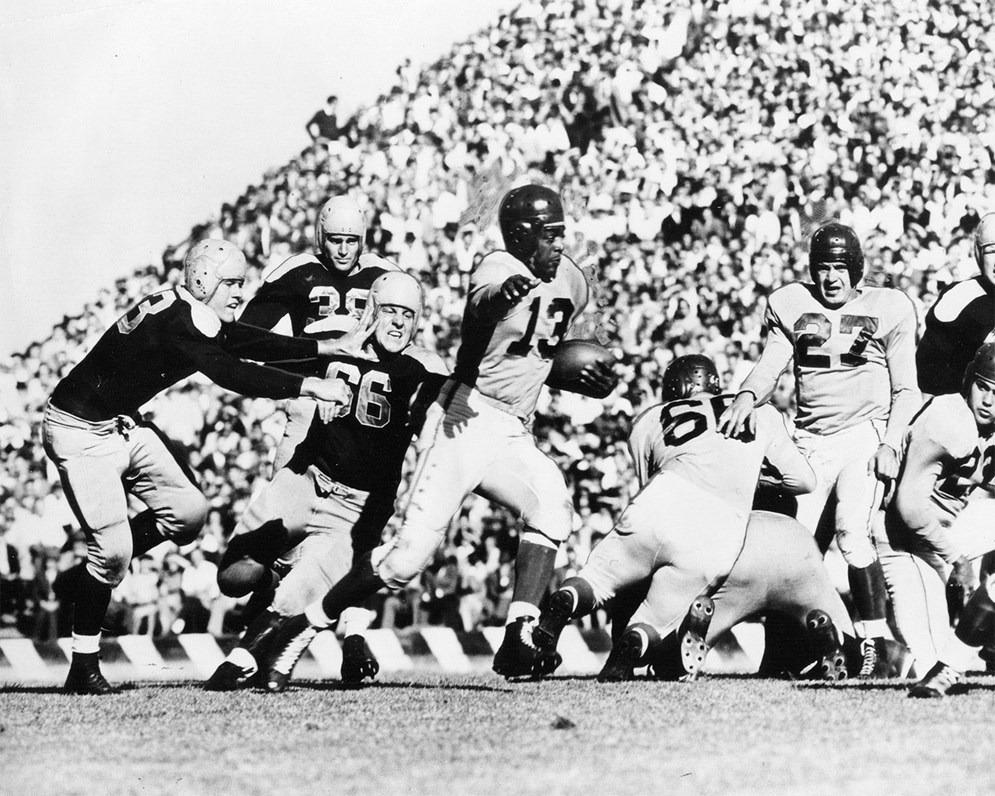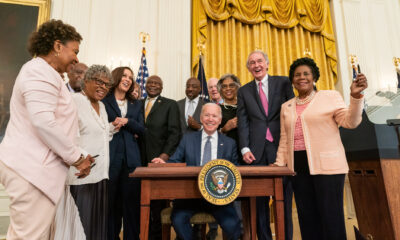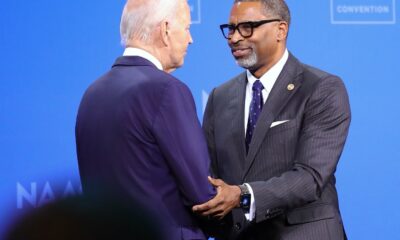Featured
How the NFL’s Ban on Black Players Ended

While you’re enjoying the Super Bowl, here’s a question you may want to pass around with the chips and dip: what year did the NFL re-integrate pro football? With the dust still settling from the Colin Kaepernick social justice campaign involving the national anthem, the league isn’t talking publicly about the years from 1933 to 1946 which defined the racial ban.
“It’s not something that is often talked about,” says Dr. Andrea Benjamin, a professor at the University of Oklahoma, who teaches a course titled, “The Black Athlete in America”. The NFL celebrates its 100th anniversary this year, and Benjamin and many others its commitment to integration and diversity.
“At the level of the player, we have surpassed the expectations,” she adds. “But, we’re not coaches, we’re not the General Managers, and we’re not the owners so the disparity is still there.”
There is an article on the NFL’s website which explains how the ban on Black pro football players ended before Jackie Robinson broke Major League Baseball’s color barrier in 1947, but baseball was the nation’s most popular sport at the time. By 1946 four Black football players were competing in the National Football League. The end of the racial barrier began when the then-Cleveland Rams relocated to Los Angeles and the Dons of the All-America Football Conference, a rival league, applied for a lease to play at Los Angeles Memorial Coliseum. The Coliseum Commission and sportswriters pressured both teams to integrate as a condition of the lease.
In the podcast, The Black Athlete, authors and sports historians Derrick White and Louis Moore, explored the similarity between Kaepernick’s settlement in his collusion case against the NFL and the decision by team owners to ban Black football
“In many ways, the fact that the NFL settled showed that Kap and Eric Reid had the League, at least, embarrassed enough not to want any of the information to leak to the public,” White asserts.
“What I was saying was, this is like a gentleman’s agreement, what’s going on here, right,” explains co-host Moore. “Others were using collusion, I was using ‘gentleman’s agreement’. And, when I said that term, I was really referring to the past, back in the day when Major League baseball, they never had anything on the books that said Black players couldn’t play the game, they just had an agreement amongst the owners that they weren’t going to sign any Black players.”
The agreement in football was also an informal pact among owners that remained in effect until a college football player from UCLA, Kenny Washington, played in a game in Chicago that pitted the best collegiate players against the champion Green Bay Packers. The owner of the Chicago Bears, George Halas, reportedly convinced Washington to stay in Chicago while Halas attempted to persuade team owners to re-integrate the sport. Halas was unsuccessful and Washington became a member of the Los Angeles police department. Finally, in 1946 the Rams signed Washington.
Benjamin underscores the historical connection.
“And, the other thing that’s so glaring is Colin Kaepernick still doesn’t have a job,” she explains. “So, it feels like whatever agreement they signed, they admitted that they had talked among themselves which is like what happened in 1933.”
So, in between the commercials and the chili, you may consider asking how far down the field of racial fairness has the NFL moved the ball.

-

 Featured10 months ago
Featured10 months agoCalifornia Is the First State to Create A Public Alert for Missing Black Youth
-

 Featured10 months ago
Featured10 months agoAfrican American Leaders Stay the Course Amid Calls for President Biden To Bow Out of Race
-

 Featured10 months ago
Featured10 months agoThe Debate Fallout Lands on Both Candidates
-

 Featured9 months ago
Featured9 months agoPresident Joe Biden Decides to Withdraw from the Presidential Race
-

 Featured10 months ago
Featured10 months agoPresident Joe Biden Describes Shooting of Donald Trump As ‘Sick’
-

 Featured9 months ago
Featured9 months agoIn One of His Final Speeches as President, Biden Says It’s Time for ‘Fresh Voices’









